Helpful tips on how to implement social distancing measures in automotive, food & beverage, pharmecuetical manufacturing, warehouses and depots, and office space.
Since March 2020, many office-occupying industries have been working from home. The world of work for today, and the foreseeable future has been changed as a consequence of the COVID-19 pandemic.
This sudden shift in workplace functions has caused significant behavioural changes that is likely to have a lasting impact on workspace design and use, while at the same time altering the demand for commercial office space in future years. Many people are hopeful for a return to their workplaces, but the level of uncertainty and unease is high regarding the timing and detail of that re-entry.
Considerable cooperation will be needed between building owners, occupants, employees, and governments to address the questions and challenges to come.
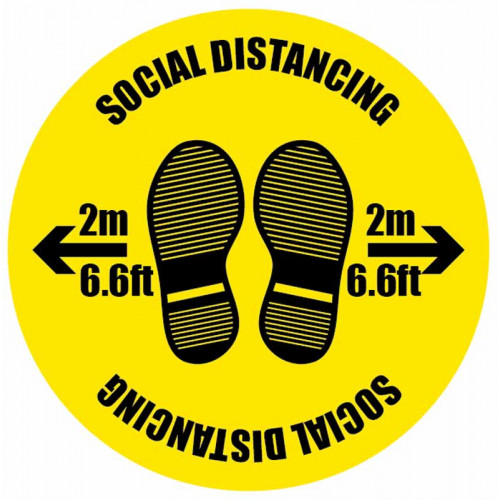 As we begin to find the way through a post-COVID-19 world, our goal is to provide comprehensive solutions to allow businesses and organisations to easily adapt to new hygiene and social distancing measures. This will allow the return to offices, factories and warehouses and hopefully ramp up productivity. Our intelligence comes from ongoing conversations with clients across a broad variety of industries and locations. We recognise the wide variation in individual needs, and that problems and opportunities will be developing fluidly.
As we begin to find the way through a post-COVID-19 world, our goal is to provide comprehensive solutions to allow businesses and organisations to easily adapt to new hygiene and social distancing measures. This will allow the return to offices, factories and warehouses and hopefully ramp up productivity. Our intelligence comes from ongoing conversations with clients across a broad variety of industries and locations. We recognise the wide variation in individual needs, and that problems and opportunities will be developing fluidly.
Our research will of course continue throughout the year, and we will adapt and change our range of solutions as needed. Our initial findings indicate clients will want the following options available to them as they consider a return to work in the new environment.
It’s clear many manufacturing plants are essential businesses that must continue to operate throughout the current Coronavirus pandemic. Our mission has been to provide a response to support these organisations and provide solutions, to make this possible.
There has not been clear directions as to how these essential manufacturing organisations are required to keep critical production running whilst implementing government advice to maintain social distancing of 2 metres. That’s why we’ve put together these simple tips on how social distancing could be implemented in your workplace to ensure the safety and hygiene of your people. Our new ‘back to work’ catalogue was also formed in response to the COVID-19 pandemic, to assist businesses in any way possible with hygiene and social distancing solutions.
Educate staff
The most important point of all is to ensure all workers are 100% aware of the reasons that  social distancing is vital, and understand how COVID-19 spreads, so they can ultimately help to prevent the spread of it.
social distancing is vital, and understand how COVID-19 spreads, so they can ultimately help to prevent the spread of it.
Communication is critical, so hold a meeting to get this point across to your employees. Obviously group briefings have changed to suit the times, and we are all getting used to using video conferencing platforms to do this. A great way to keep safe and is easily available for everyone to use.
Flexible work schedules and locations
 It is clear very few roles relating to manufacturing can be completed effectively when off-site 100% of the time, although industries can work remotely reasonably effortlessly.
It is clear very few roles relating to manufacturing can be completed effectively when off-site 100% of the time, although industries can work remotely reasonably effortlessly.
Non-factory personnel need to be given all they require so that they do not need to even enter the building. Consider implementing a rota system for where management and other key personnel are needed on site. All businesses will find this a perfect time to review your systems, and consider moving to digital or cloud based methods as much as possible, which will assist working off-site.
Try and approach with the mind set of ‘how much can I do off-site’ rather than ‘how much do I need to do while I am here’.
It is important to recognize that as return-to-work becomes possible from public health, government and company perspectives, the migration of employees back into the office will be gradual rather than immediate. It is likely that the first wave of return to work will be focused on employees that truly need to be in the office to complete their tasks, with either a phased or rotational approach following as feasible.
Make it a team effort
Now you have had a meeting and all team members are aware of your social distancing rules, they must be held responsible to enforce it, and notify management of any non- conformance.
conformance.
Peer accountability is a very effective method of enforcing these new measures. Not only does it gain the most influence, it also spreads quickly.
Every team includes likeable people with passionate and willing qualities. These people make great leaders – carrying consistent influence. Identify these team members and get them on board with your new strategy.
Additional entrances and exits
Review all of the entrances and exits in your premises, and think about ways to spread out 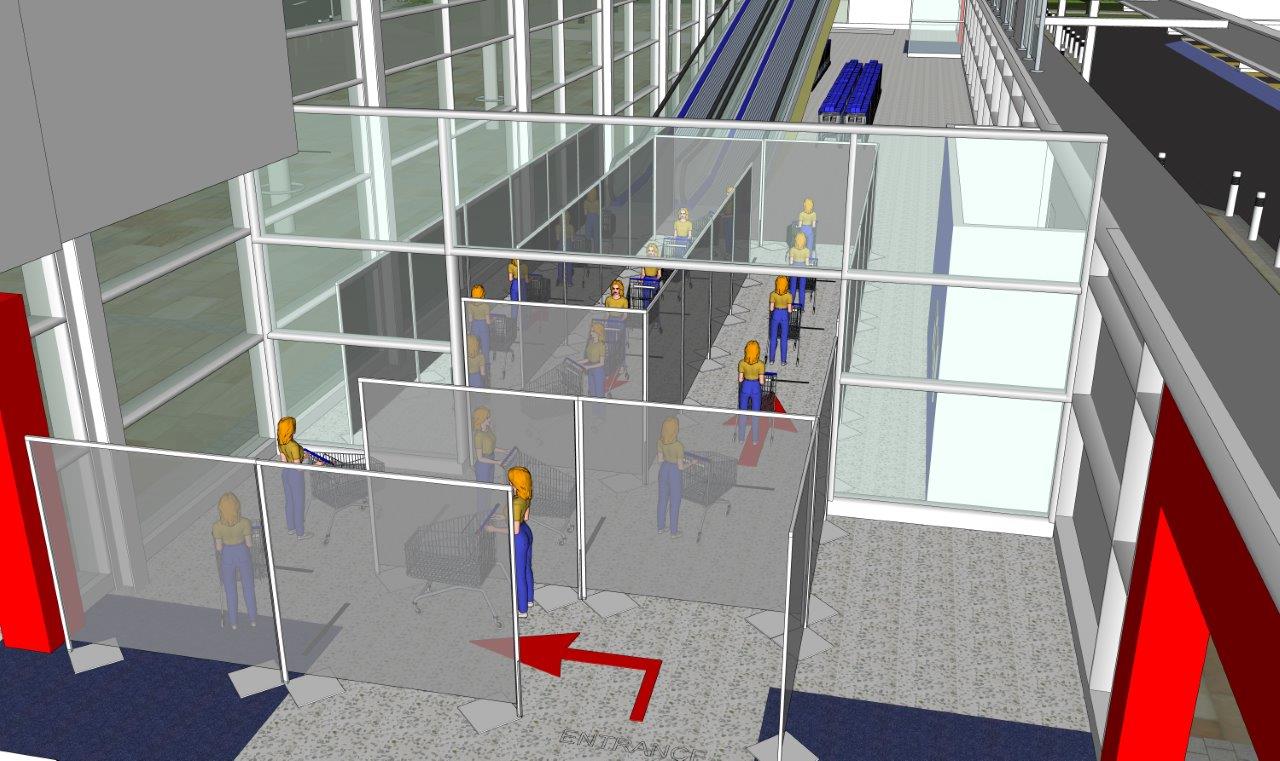 the people flow. Additional doors available and a turnstile entrance and exit system, not only in and out of the factory or office, but from area-to-area is a great way to keep social distancing in place. Make sure there is a hand sanitiser station at each of these entrance ways, and a shoe sanitiser mat is also extremely beneficial, especially for factories.
the people flow. Additional doors available and a turnstile entrance and exit system, not only in and out of the factory or office, but from area-to-area is a great way to keep social distancing in place. Make sure there is a hand sanitiser station at each of these entrance ways, and a shoe sanitiser mat is also extremely beneficial, especially for factories.
Lobbies and corridors can easily become areas that people linger in, and could potentially become congested and unsafe. Removing seating from these areas is helpful, or including segregation screens for people flow, and adequate signage.
Make it as visual as you can
Images are a universal language, the human brain processes pictures 60,000 times faster than words. Warning safety signs are recognised throughout the UK to highlight potential danger, and are much more likely to be noticed and adhered to by customers than self printed alternatives.
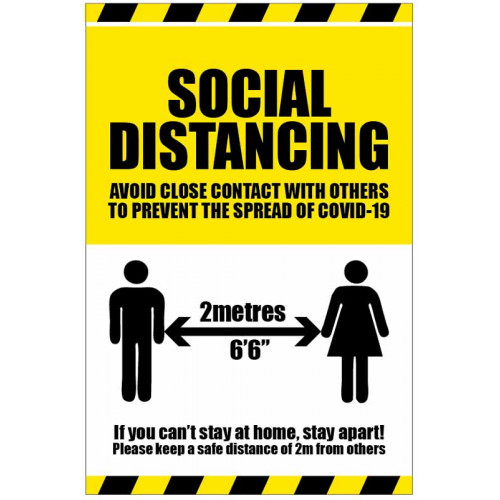 Using signs you can ensure your social distancing message is visual and always in the face of your team. This will not only be understood quickly and thoroughly, it also serves as a constant reminder, keeping it in the front of their minds.
Using signs you can ensure your social distancing message is visual and always in the face of your team. This will not only be understood quickly and thoroughly, it also serves as a constant reminder, keeping it in the front of their minds.
Visual management can include temporary or permanent signage to keep reminding staff of the rules, including easy to use self adhesive vinyl signage. Markings on the floor are great so workers know safe distances to stand on production lines, our range of signs includes sub-surface printed floor graphics laminated in hard anti-slip polycarbonate film.
Clear communication and visibility of risk mitigation efforts and health and cleaning protocols will be critical to address the psychological hurdle employees will face returning to work.
Zoning for factories or open plan offices
 Factory and office areas should be fully zoned, meaning operatives are prohibited from entering non-essential areas or zones they do not need to enter. Ensuring each team member has all of the equipment they need to hand will help enforce this.
Factory and office areas should be fully zoned, meaning operatives are prohibited from entering non-essential areas or zones they do not need to enter. Ensuring each team member has all of the equipment they need to hand will help enforce this.
You may already have measures like this in place, but review it or reinforcing how important adhering to it is can take your zoning to the next level to prevent any avoidable crossover.
Physical segregation barriers and dividers
The COVID-19 virus has led us to re-calculate our physical proximity to others. The return to working in offices, regardless of the health and medical progress needed, a level of anxiety 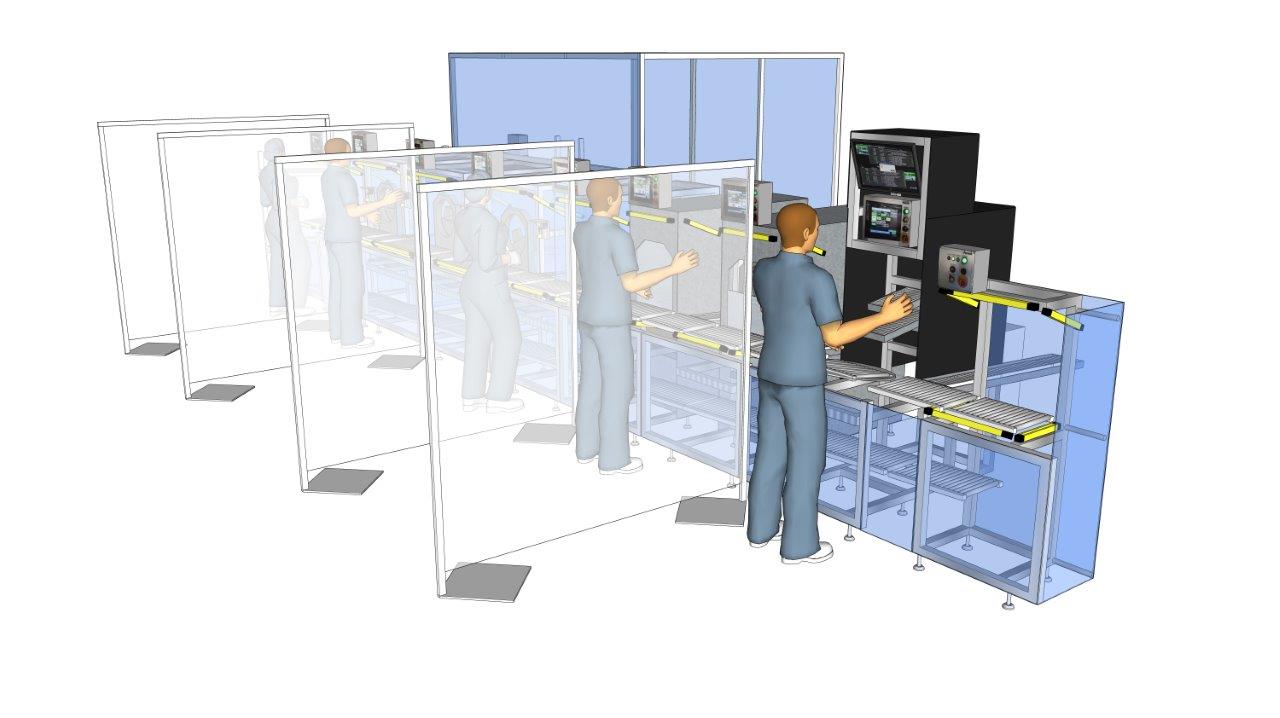 about invisible contagions is going to persist. This is likely to result in emphasis on personal space and changes in our comfort level with physical closeness. Space design that offers greater separation or social distancing from others is going to be crucial moving forward.
about invisible contagions is going to persist. This is likely to result in emphasis on personal space and changes in our comfort level with physical closeness. Space design that offers greater separation or social distancing from others is going to be crucial moving forward.
In the near future, workplace arrangements and employee densities will have to be considered carefully to adhere to some kind of social distancing, whether by mandate or preference, that will be anticipated in the workplace, at least for the next few months, if not longer.
Our rapid screen dividers and SepraWall system have been tried and tested in office spaces, and manufacturing, and has been proven to be extremely beneficial. Sometimes 2 metre distancing isn’t an option in manufacturing due to machinery operation or a task requiring two or more people in close proximity. Introducing physical segregation barriers can prevent any risk of infection spread. The same goes in office spaces where there isn’t enough space to spread desks to 2 metres apart, and areas like communal spaces, shared amenities, and potentially crowded “bottlenecks” including lobbies, elevators, bathrooms, and cafés, receptions, corridors, waiting rooms and changing rooms. Estimating usage, monitoring and managing density and flow, and creating flexibility to make adjustments and communicate protocols will be critical for reentry and the near-term transition period.
Consider where crowds might be likely to build up, and use divider screens here. Transparent or opaque options are available. Our hygienic and versatile screening solution can be rapidly deployed and easily reconfigured. Removable, hygienic, cleanable antimicrobial fabric panel in our segregation screens is available. Self assembly is so easy, no special skills are needed, and it is easily put in storage, occupying very little space when no longer needed.
Personal equipment for every team member
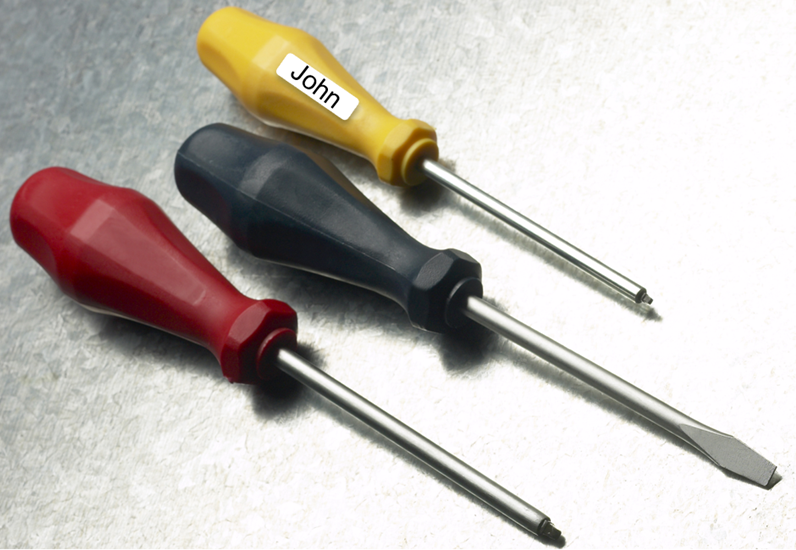 Whether it’s a pen or other stationary, engineering tools or PPE, all factory and office staff need to have designated equipment that only they are permitted to use. This will prevent people wandering between areas to find things, and also stop people touching things that are regularly touched by others, reducing the likelihood of infection spread.
Whether it’s a pen or other stationary, engineering tools or PPE, all factory and office staff need to have designated equipment that only they are permitted to use. This will prevent people wandering between areas to find things, and also stop people touching things that are regularly touched by others, reducing the likelihood of infection spread.
Evaluate the equipment where there is the highest risk of COVID-19 being passed on, and reduce the circulation of these items by increasing the number of units in use. Even consider using labels or name tags to make sure this happens!
Alternated break and shift schedule
This is a wise way to reduce the amount of people gathered together at any given time,  particularly in usually concentrated areas such as canteens, manual packing lines, and office break out areas,
particularly in usually concentrated areas such as canteens, manual packing lines, and office break out areas,
Seem like an organizational nightmare? Once it is set up and in place your staff will get used to it, and it will run smoothly. Remember that if everyone halves the number of people they come in contact with, it could make the single biggest impact in preventing Coronavirus spreading through your workforce.
Canteen and other break area rules
A 1 person per table limit should be introduced, and even re-arrange tables so they are all at least 2 metres apart. Segregation screens have been tried and proved very effective in 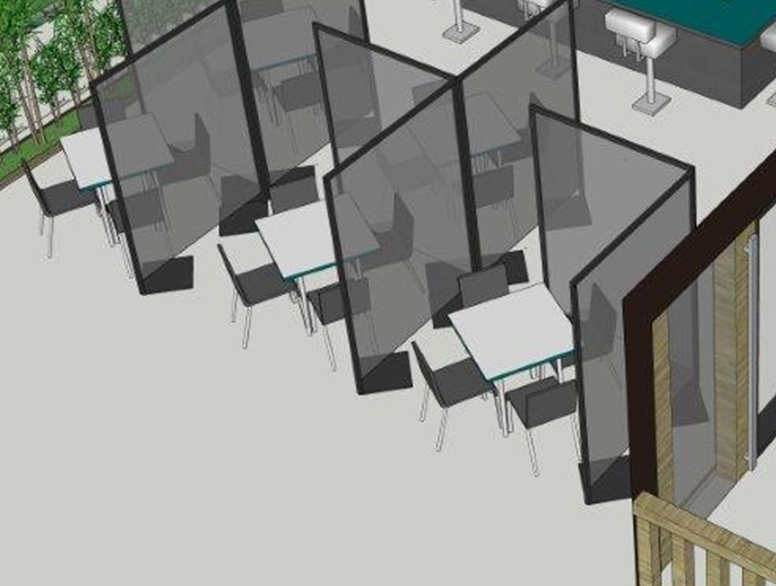 amenity areas and canteens, both between tables and on serving counters.
amenity areas and canteens, both between tables and on serving counters.
Don’t forget other frequent gathering points such as smoking shelters – these should be controlled, you may even need to create additional areas if safe distancing isn’t possible in current facilities.
Hyper-focus on health and safety
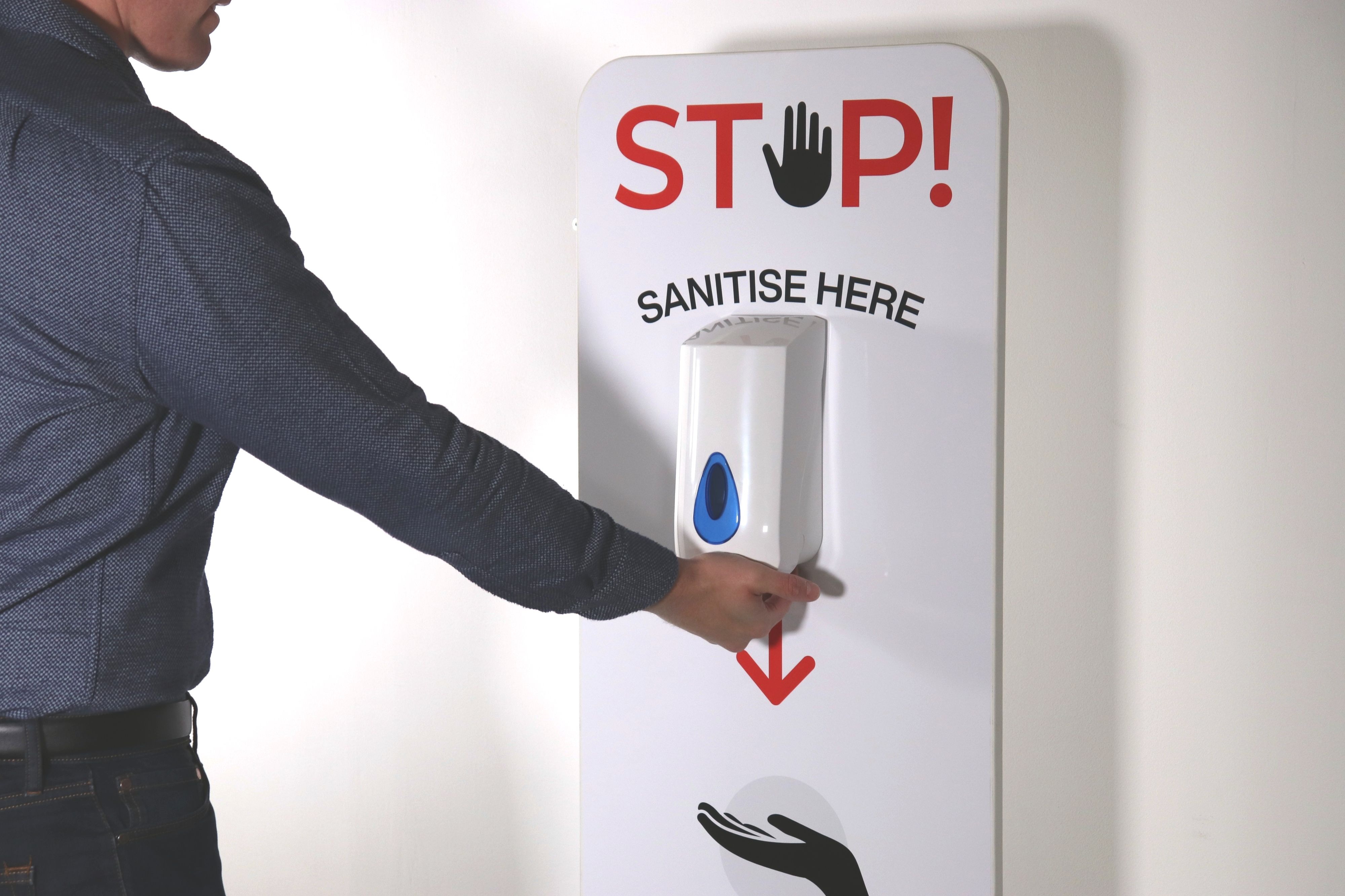 As we return to physical workplaces, the focus on health, safety, security and location will have entirely new meanings. Based on observations of office security policies in other countries, it is expected that certain buildings will implement temperature scans or other health verifications for building entry.
As we return to physical workplaces, the focus on health, safety, security and location will have entirely new meanings. Based on observations of office security policies in other countries, it is expected that certain buildings will implement temperature scans or other health verifications for building entry.
Measures to improve the safety and sanitation of physical environments need to be and will be embraced as our awareness of personal risk and exposure has now reached unprecedented levels. Our interactions with people and spaces are all likely to happen with a mindset of safety and self-preservation. Regular surface sanitisation, hand sanitiser stations, footwear sanitation mats are just a few of the newly essential items.
We understand it is a challenging time at the moment, and hope you and your loved ones are keeping well and positive during these extremely testing times.
Some quotes that recently encouraged our team –
‘Difficult roads often lead to beautiful destinations. The best is yet to come!’
‘Sometimes the things that hurt you most, teach you the greatest lessons in life’
We know many of you are continuing to manufacture and supply essential goods, and we are fully committed to supporting you. Our ‘back to work’ guide was created with solutions in mind for every different organisation type, to help you in increasing hygiene and safety measures throughout the latest crisis. We look forward to hearing from you and discussing your needs with you.
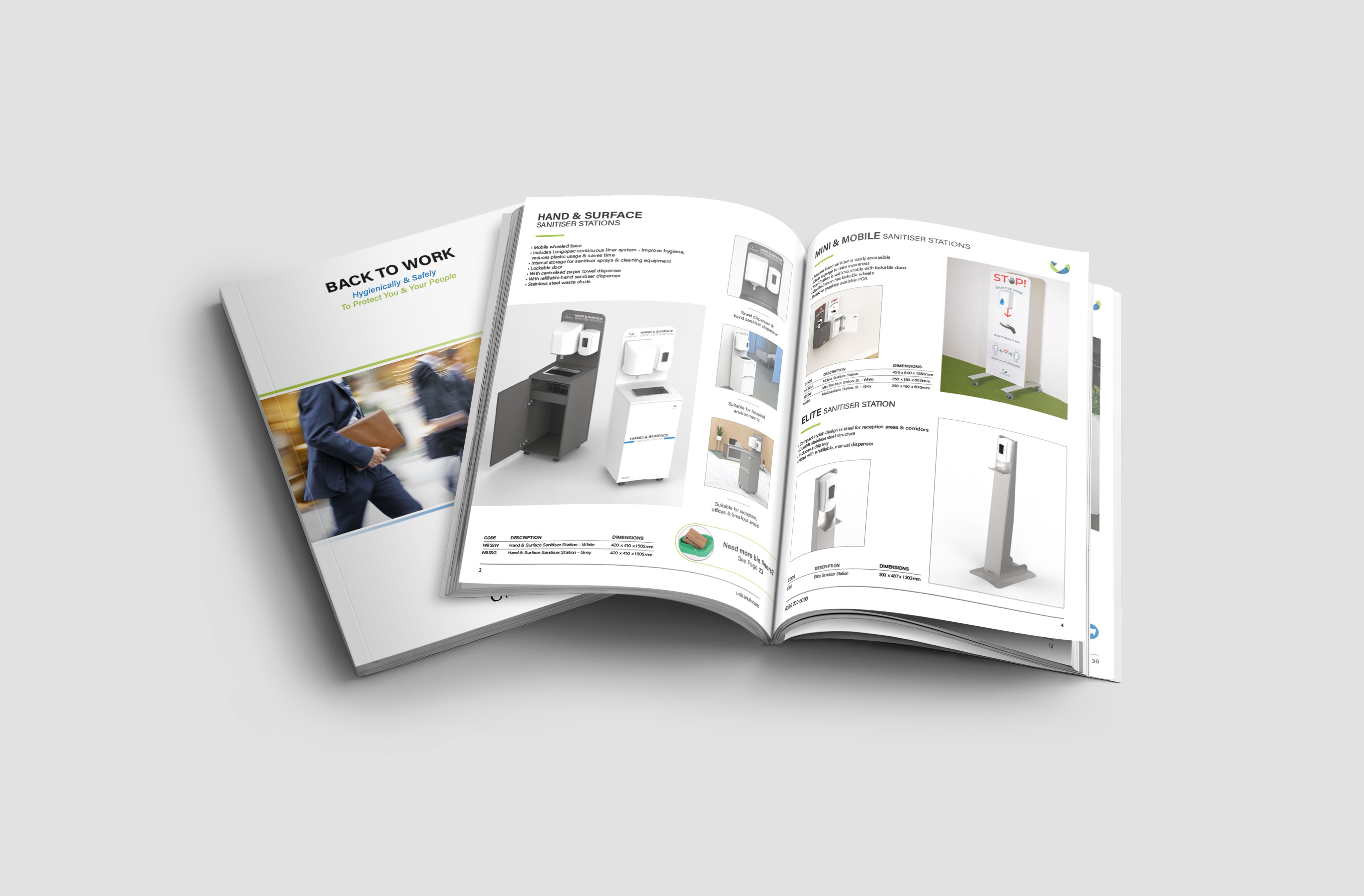
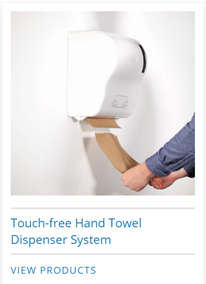
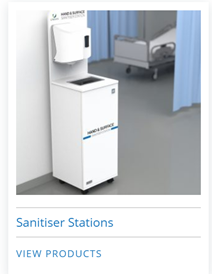

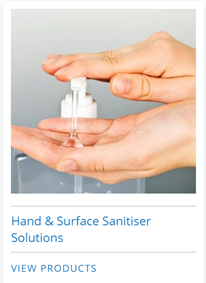

Oops! We could not locate your form.
